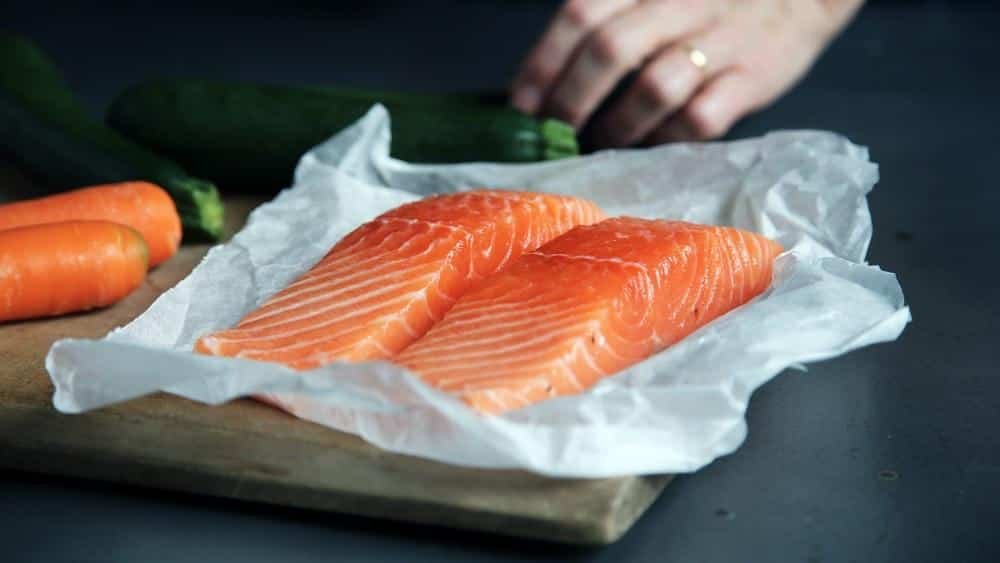A lot of people think that dogs can’t eat human food, but that’s actually not true. There are a lot of foods that are safe for dogs to eat, but there are also a lot of foods that aren’t safe. Dogs love fish. They love the smell, taste, and everything about it. But can dogs eat fish sticks?
Description Of Fish Sticks
Fish sticks are a type of processed food made from fish that has been breaded or battered and then fried. They are commonly made from whitefish, such as cod, haddock, or pollock. Fish sticks can also be made from salmon, tuna, or other types of fish.
The fish is first fileted and then cut into strips. The strips are then coated in a breading or batter and then fried. Fish sticks are usually served with a dipping sauce, such as tartar sauce or ketchup.
Most fish sticks contain wheat flour, salt, and various seasonings in the breading or batter. Some brands of fish sticks may also contain egg or milk products.
While fish sticks are convenient and easy to prepare food, they are generally considered to be unhealthy. This is because they are high in calories and fat and contain little nutritional value. Fish sticks are also often made from cheaper, lower-quality fish. For these reasons, it is important to read the label carefully when buying fish sticks and to limit their consumption if you are trying to eat a healthy diet.
Can Dogs Eat Fish Sticks?
Fish sticks are not considered to be a healthy food for dogs. This is because they are high in calories and fat and contain little nutritional value. Additionally, the breading or batter on fish sticks can be difficult for dogs to digest.
If you do decide to give your dog fish sticks, it is important to do so in moderation. You should also remove the breading or batter before giving them to your dog, as this can make it easier for them to digest. Additionally, it is important to read the label carefully when buying fish sticks, as some brands may contain ingredients that are harmful to dogs.
In general, it is best to avoid giving your dog processed foods like fish sticks. These foods are generally unhealthy and provide little nutritional value. If you want to give your dog a treat, there are many healthy and nutritious options available.
You should also avoid fish sticks that are made with cheaper, lower-quality fish. These fish sticks are more likely to contain harmful chemicals and pollutants that can be dangerous for your dog. If you are unsure about the quality of the fish sticks you are buying, it is best to contact the manufacturer for more information.
However, if you are making fish sticks at home and you use high-quality, natural ingredients, you can surely give your dog a few as an occasional treat. Just remember to do so in moderation and to remove the breading or batter before giving them to your dog.
Benefits of Eating Fish For Dogs
Although processed fish sticks may not be suitable for dogs, this is not to say that fish is not good food for them. In fact, there are many benefits to feeding your dog fish.
Fish is a healthy, low-fat food that provides a variety of nutrients for dogs and is an excellent source of protein. Fish is an excellent source of protein and omega-3 fatty acids, which are beneficial for the skin and coat. In addition, fish contains a variety of vitamins and minerals that can help keep your dog healthy.
One of the most important benefits of feeding fish to your dog is the omega-3 fatty acids. Omega-3 fatty acids are essential for the health of your dog’s skin and coat. They also have anti-inflammatory properties, which can be helpful for dogs with conditions such as allergies or arthritis.
In addition to the omega-3 fatty acids, fish is also a good source of protein. Protein is essential for the growth and repair of tissues. It is also necessary for the production of enzymes and hormones. Dogs need about 18% protein in their diet, so feeding them fish can help them to meet their protein requirements.

« Is Coffee Bad for Dogs?
Why Do Golden Retrievers Want to Eat Everything? »
Fish is also a good source of vitamins and minerals, including vitamin A, vitamin D, and selenium. Vitamin A is important for vision and cell growth. Vitamin D helps the body absorb calcium, which is essential for healthy bones and teeth. Selenium is an important antioxidant that can help to protect cells from damage.
There are a few things to keep in mind when feeding fish to your dog. First, it is important to choose fresh, wild-caught fish whenever possible. Farm-raised fish may contain higher levels of toxins and chemicals. Second, be sure to remove the bones from the fish before feeding it to your dog. Bones can splinter and cause choking or other problems. Finally, don’t feed your dog raw fish, as this can increase the risk of food poisoning.
If you’re looking for healthy, nutritious food for your dog, fish is an excellent choice. It is a good source of protein and omega-3 fatty acids, and it also contains a variety of vitamins and minerals. Feeding your dog fish can help to keep them healthy and happy.
Our Final Thoughts
After taking a closer look, we can see that there are both good and bad sides to feeding fish sticks to dogs. While they may be okay as an occasional treat, it is important to be aware of the potential risks involved. Feeding your dog processed foods like fish sticks can be unhealthy and may not provide them with the nutrients they need. If you want to give your dog a treat, there are many healthy and nutritious options available. Just be sure to do so in moderation and to remove the breading or batter before giving them to your dog.
Remember, fish is excellent for your pup when fed in moderation and as part of a healthy, balanced diet. If you have any concerns about feeding fish to your dog, be sure to speak with your veterinarian. They can help you to choose the best foods for your pup and create a tailored dietary plan.








